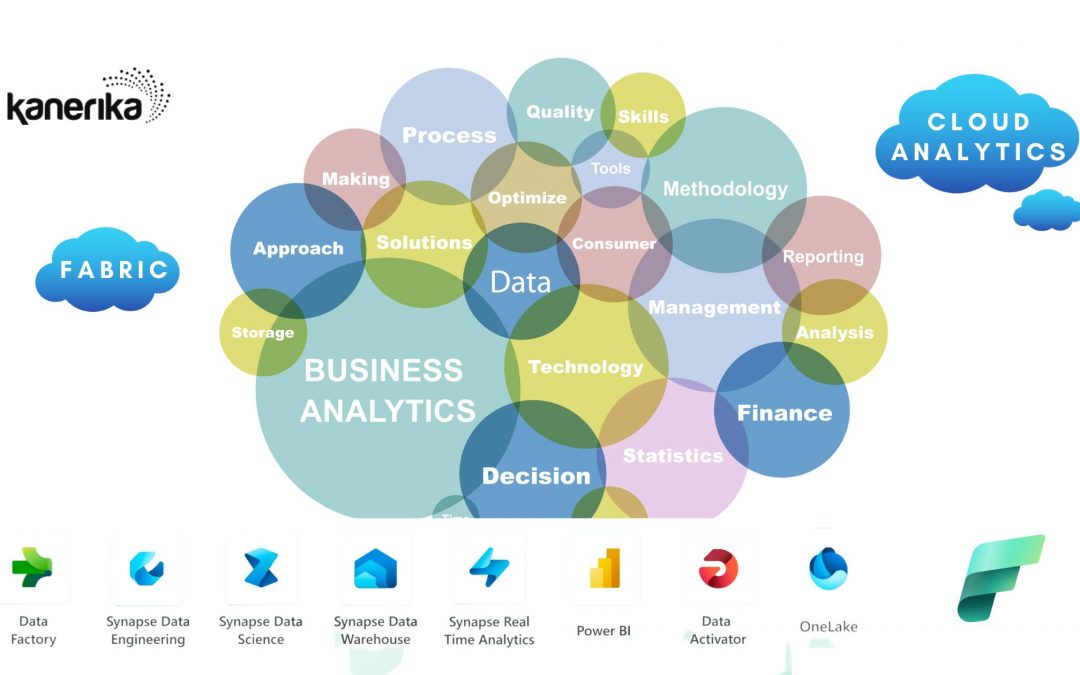It is common for business users to get lost in the data labyrinth of today’s cloud analytical tools. An average business uses more than five different tools to initiate and perform data analytics.
Most of these tools are beyond comprehension for business users. They are restricted to tools like PowerBI, which are more user-friendly than others. But what about data warehouses and all the other processes that collect, clean, and prepare data for analysis? It’s clearly a black box – an outdated framework where a business user has to depend on multiple tools and teams to gain information.
If that sounds complex and time-consuming, it’s because it is. The complexities of data management have become a pressing concern for businesses as global expenditure on cloud infrastructure services reached over $61 billion last year. But an elegant new solution in the market may address this pain point.
Microsoft’s new platform, Fabric, emerges as a unified data analytics platform that weaves together the best of Microsoft’s data technologies, such as Azure Data Factory, Azure Synapse Analytics, and Power BI, into a single unified product. In this article, we will explore why Microsoft Fabric was a much-needed upgrade for the industry.
Table of Contents
- The Challenge of Modern Cloud Analytics Platforms
- Microsoft Fabric – Weaving Simplicity Into Complexity
- Transparency and Strategic Advantage
- Integration with Azure
- Why Fabric is Set to Replace Other Cloud Platforms
- Fabric is Unifying Data in One Lake
- Cost and Time Savings with Fabric’s Unified Ecosystem
- One-Cost Structure – Fabric Simplifying Budgeting
- Fortifying Data Security & Integrity
- Fabric has Started a Data Revolution – But it’s Just the Beginning!
- FLIP and Microsoft Fabric: Revolutionizing Data Management for Business Users
- FAQ
The Challenge of Modern Cloud Analytics Platforms
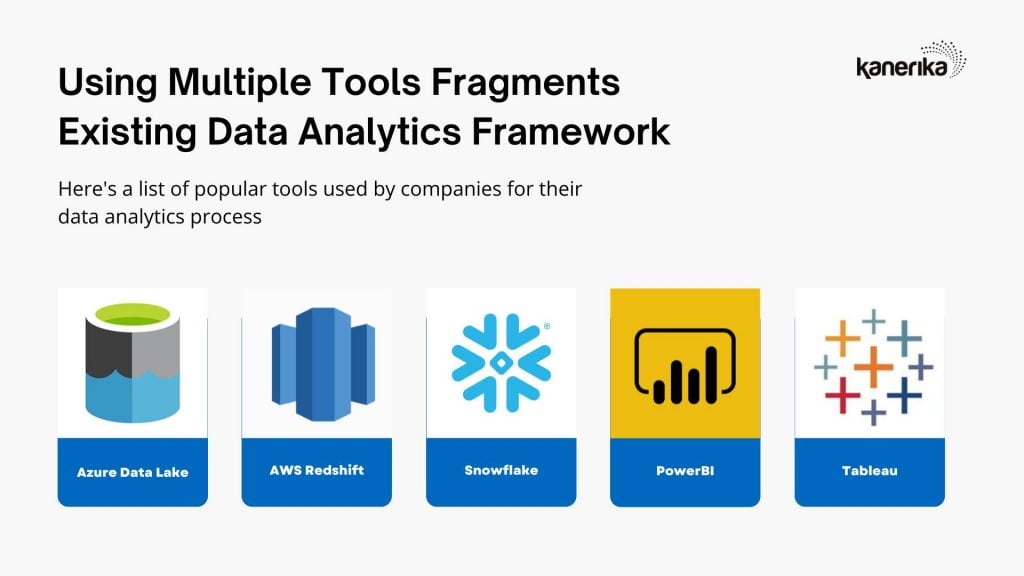
In the complex world of data engineering, the journey from raw data to actionable insights is filled with twists and turns, each more perplexing than the last.
Consider the typical journey in Azure. It begins with a data lake, a necessary reservoir for the influx of information. But then comes the need for redshift or snowflake, adding layers to the process. Power BI or Tableau enters the scene, each requiring its copy of the data. Suddenly, we find ourselves with four copies, each a reflection of the other but adding complexity to the process.
Lookr, with its import mode, or Azure Snap Data Warehouse, created specifically for transformed data, further complicates the landscape. These tools, while powerful in their own right, add to the maze of technologies that must be navigated.
With 63% of SMB workloads expected to be hosted in the cloud in 2023, modern Agile principles, ensuring that our journey is efficient, transparent, and accessible to all stakeholders, is perennial.
Microsoft Fabric – Weaving Simplicity Into Complexity
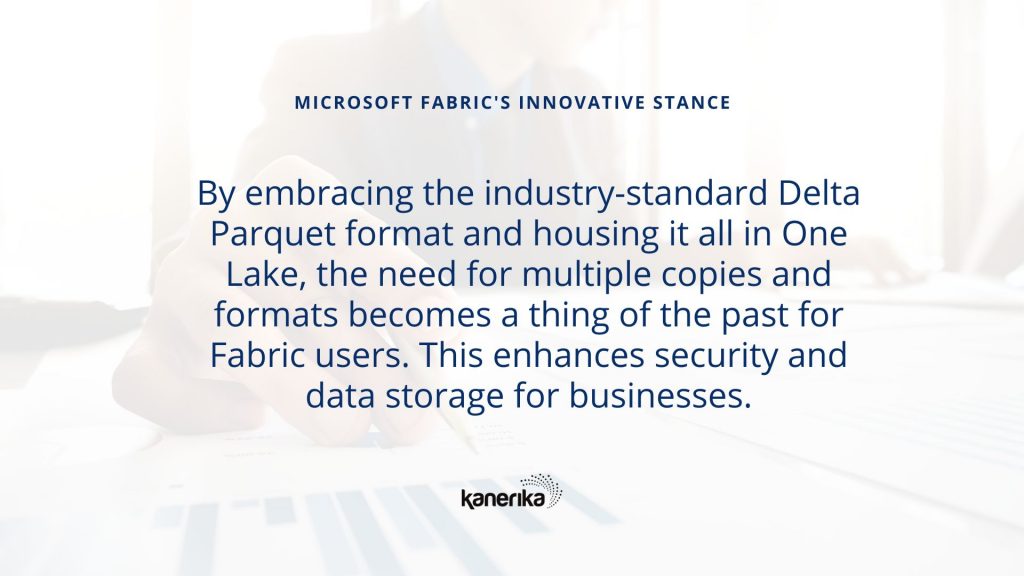
In the traditional data landscape, business leaders often find themselves confined to the final output of data analysis. Typically through tools like Power BI. This confinement blinds them to the intricate processes leading to those final insights. Thus, leaving them disconnected from the vital data transformation and storage stages.
Microsoft Fabric heralds a transformative shift in this paradigm. Imagine a world where data is stored in one universal format and one central location. This is the world that Microsoft Fabric seeks to create. By embracing the industry-standard Delta Parquet format and housing it all in One Lake, the need for multiple copies and formats becomes a thing of the past.
Read More – Microsoft Copilot vs ChatGPT: Choosing the Right AI Titan
Transparency and Strategic Advantage
The true innovation of Microsoft Fabric lies in its transparency. Data Transformation is unavoidable in data analysis. Data must undergo a metamorphosis if it finds its home in a warehouse or lakehouse. It’s a necessary step, but one that can often add to the complexity of the process. Microsoft Fabric recognizes this challenge and turns it into an opportunity. Allowing PowerBI to read the Delta Parquet format directly unveils the entire process, from raw data to final visualization.
This transparency is not just a technological feature; it’s a strategic advantage. It provides a window into a world that was once a black box, aligning with the trend of 89% of businesses using multi-cloud solutions. More importantly, it extends visibility to business leaders, often left in the dark in traditional warehousing processes. Fabric invites them into the process, giving them a seat at the table with tools like Excel and PowerBI.
As one Microsoft Fabric expert stated in a recent video, “Transparency in data is not just about seeing the numbers; it’s about understanding the story behind those numbers.” This philosophy is at the core of Microsoft Fabric’s approach.
Integration with Azure
With a 2% market share gain in 2022, bringing it to a total of 23% market share, Microsoft Azure’s integration with Fabric is a testament to the beauty of Microsoft Fabric. It weaves the various strands of data engineering into a cohesive whole, simplifying complexity and making it transparent and accessible to all stakeholders, including business leaders.
Why Fabric is Set to Replace Other Cloud Platforms
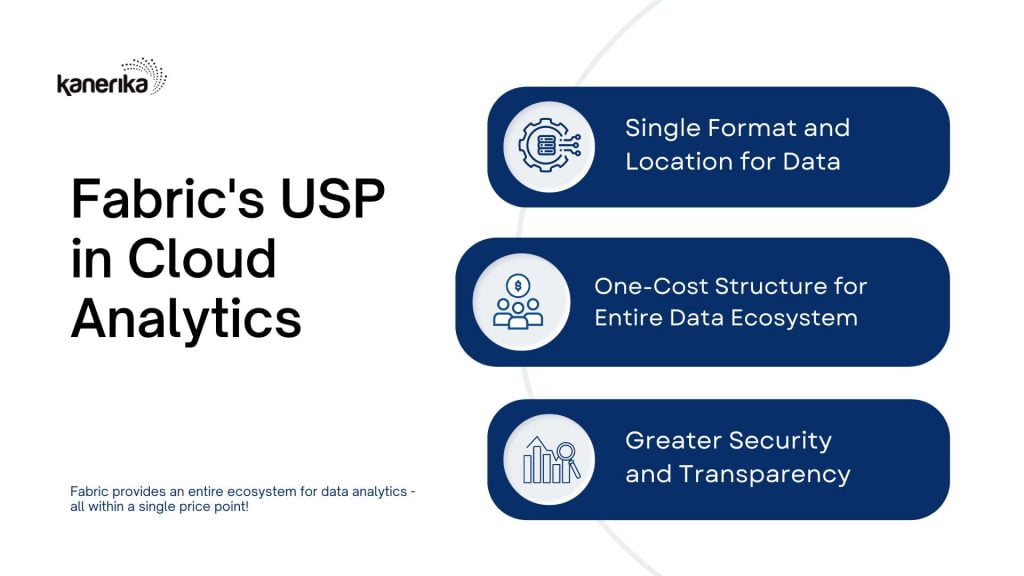
As one industry expert noted in a Microsoft Fabric video, “The power of Microsoft Fabric lies in its ability to make the complex simple, and the hidden visible.” This philosophy encapsulates the essence of Microsoft Fabric’s approach.
Microsoft Fabric stands apart in a world where data is not just information but a strategic asset. While the cloud has become ubiquitous in modern business, not all clouds are created equal. The difference often lies in the tools they offer, and this is where many clouds find themselves in the shadow of Microsoft Fabric.
Firstly, Fabric’s unified approach offers a single format and location for data storage – a feature that has been much requested in the industry for years. It eliminates the need for multiple copies and tools and simplifies the process for business users to view and access using PowerBI.
While other clouds typically require a maze of tools like data lakes, redshift, snowflake, and Power BI, each demanding its copy of data, Microsoft Fabric simplifies the process. This is further enhanced with the introduction of Microsoft’s AI Assistant, Copilot, which is set to assist with automated workflows, intelligent recommendations, and a user-friendly interface to help developers and business users streamline their operations.
Fabric is Unifying Data in One Lake
With its ability to handle unstructured and structured data, a lakehouse is a versatile tool. However, its SQL engine cannot write, limiting its functionality in certain scenarios. On the other hand, a warehouse is tailored for structured data, and its SQL engine can write, offering more flexibility in data manipulation.
Microsoft Fabric’s OneLake offers two distinct pathways for users: Lakehouse and Warehouse (Synapse Data Warehouse), each tailored to meet diverse data needs. The Lakehouse, a cutting-edge platform, unifies structured and unstructured data, providing a single location for all data activities. Its ability to automatically generate a read-only SQL endpoint and default dataset simplifies data access. Meanwhile, the Warehouse offers robust data management with extensive support for transactional operations.
Microsoft Fabric’s flexibility enables data engineers to choose technologies based on data volume, size, and comfort level.
Cost and Time Savings with Fabric’s Unified Ecosystem
Microsoft Fabric’s Dataflow Gen 2 feature simplifies processes by enabling Data Engineers to visually design data transformations without intricate coding, accelerating development and boosting productivity.
Moreover, Microsoft Fabric’s unified platform fosters collaboration within the analytics workflow, ensuring effective project execution. In fact, buying one storage solution of 1 TB allows for writing across both the warehouse and the lakehouse.
Microsoft Fabric’s clients at Ferguson have remarked:
“Microsoft Fabric reduces the delivery time by removing the overhead of using multiple disparate services. By consolidating the necessary data provisioning, transformation, modeling, and analysis services into one UI, the time from raw data to business intelligence is significantly reduced.”
One-Cost Structure – Fabric Simplifying Budgeting
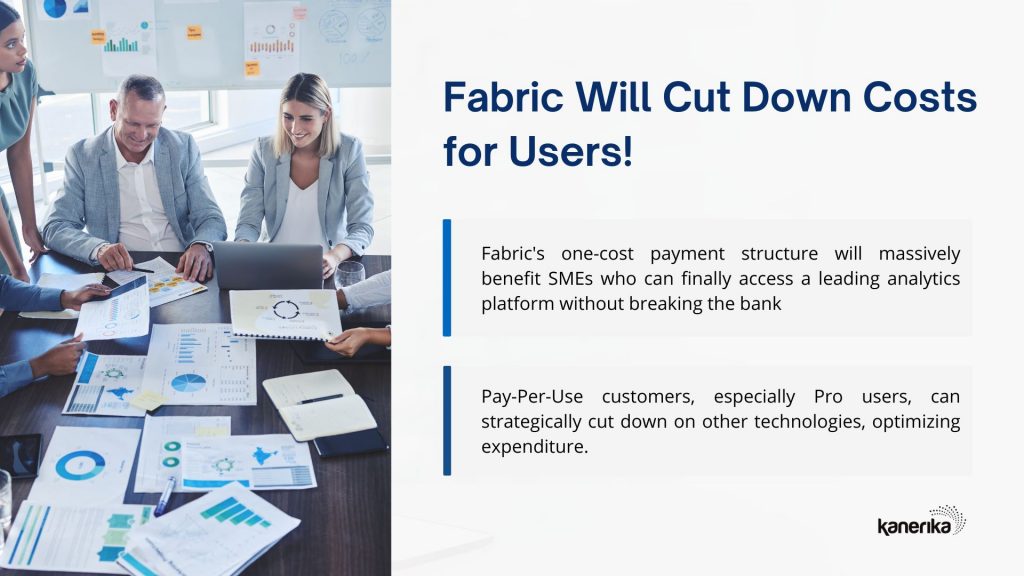
We can’t jump into the topic of cost management and not discuss the anticipated price drop in F64 within a year.
Simultaneously, with PowerBI integration, Fabric offers individual capacity at shared capacity costs. Organizations with fewer than 300 PowerBI Pro licenses, paying around $2000 monthly, can find substantial savings. The unified pricing for warehouse, database, lakehouse, and PowerBI services under one cost structure simplifies budgeting.
Pay-Per-Use customers, especially Pro users, can strategically cut down on other technologies, optimizing expenditure. Microsoft Fabric’s one-cost payment structure will massively benefit SMEs. They can finally access a leading analytics platform without breaking the bank. This will lead to increased adoption of Fabric as Microsoft attempts to increase the scope of new users within its ecosystem.
Fortifying Data Security & Integrity
In a world where data is the new currency, Microsoft Fabric’s comprehensive security approach fortifies every organization’s most valuable asset – its data. Fabric’s unified environment offers a singular advantage – the consolidation of security across the lakehouse, warehouse, and PowerBI.
Unlike the traditional approach of securing each tool individually, Microsoft Fabric’s inherent security and governance capabilities provide a robust shield for a business’s analytics process. This simplifies security management and enhances control, ensuring that a company’s data remains protected at every stage.
Fabric has Started a Data Revolution – But it’s Just the Beginning!
Few products in their lifetime can create as large disruptions as the iPhone did when Steve Jobs famously announced the world’s first smartphone in 2007. While it would be too early to declare Fabric as the iPhone moment in the world of data analytics, all the signs look promising.
By positioning Fabric as a unified data ecosystem, Microsoft is cleverly re-adapting its system. It’s making it more accessible for business users. Significant savings and a one-cost structure further increase Fabric’s accessibility. New businesses that could not imagine signing up for a state-of-the-art data ecosystem earlier, are enabled to explore them now.
As the preview period for Fabric comes to an end, it will be interesting to see how many of its users are new customers to Microsoft. There is a very high probability that Fabric will attract customers from other systems. These users will undoubtedly be interested in keeping all their data processes secure within a single ecosystem.
As Othman Laraki had quoted, “Products tend to succeed thanks to a single core use case that really mattered to users.” In this case, Fabric’s unified ecosystem will capture a large market share as more customers steer towards the ease of a single powerful platform.
It is becoming clear that Microsoft Fabric is not just a product; it’s a business philosophy. It’s about seeing beyond the numbers and embracing the future with clarity and conviction – and Microsoft is clearly on the right track here.
FLIP and Microsoft Fabric: Revolutionizing Data Management for Business Users
Tackling the Complexities of Modern Data Analytics
In the intricate landscape of cloud analytics, where business users often find themselves lost in a maze of tools, Kanerika’s FLIP emerges as a beacon of clarity and efficiency. The average business juggles more than five different tools for data analytics, creating a complex and time-consuming process, especially when dealing with data warehouses and other preparatory data processes. This convoluted framework, often a black box to business users, necessitates reliance on multiple tools and teams for insights.
FLIP: Simplifying the Data Journey
With global expenditure on cloud infrastructure services soaring beyond $61 billion, the need for streamlined data management solutions is more pressing than ever. Kanerika’s FLIP, by supporting Microsoft Fabric, offers an elegant solution to this challenge. Microsoft Fabric, a unified data analytics platform, integrates various Microsoft data technologies like Azure Data Factory, Azure Synapse Analytics, and Power BI into a single product, simplifying the data analytics journey.
- Unifying Data Processes: FLIP’s integration with Fabric transforms the data analytics landscape. By providing a single platform that combines data storage, transformation, and analysis, FLIP eliminates the need for multiple copies and formats, simplifying the workflow for business users.
- Enhancing Transparency and Strategic Advantage: The integration allows users to see the entire data process, from raw data to final visualization, in a transparent manner. This visibility is a strategic advantage, aligning with the trend of businesses moving towards multi-cloud solutions.
- Streamlining Integration with Azure: As Microsoft Azure continues to gain market share, the integration of FLIP with Fabric leverages Azure’s strengths, offering a cohesive data engineering environment that is both transparent and accessible to all stakeholders.
- Setting a New Standard in Cloud Platforms: FLIP’s support for Fabric positions it as a leader in the move towards more unified and user-friendly cloud platforms. Fabric’s ability to simplify complex data processes and make them visible is a game changer in the industry.
The Future of Data Analytics with FLIP and Fabric
Kanerika’s FLIP, integrated with Microsoft Fabric, is starting a revolution in data analytics. This partnership signifies more than just technological advancement; it represents a shift in business philosophy towards more integrated, transparent, and user-friendly data management solutions. As the data landscape evolves, FLIP and Fabric are poised to lead the way, offering businesses a clearer path through the data labyrinth and into the future of sophisticated, streamlined data analytics.

